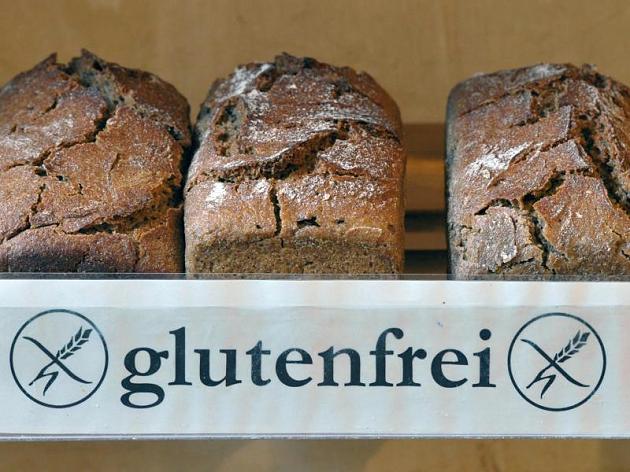Instead of rolls: French fries
It is not easy to diagnose a disease when the patient cannot speak. Norman Kalesse from Lemgo in East Westphalia was 18 months old when he was constantly suffering from flatulence . “I was always in a bad mood, I often screamed and didn’t want to eat anything,” says the 19-year-old. Several visits to the doctor were necessary before a doctor came up with the idea of mirroring the little boy’s small intestine in order to then make the diagnosis: celiac disease . His body is sensitive to the gluten contained in some types of grain.
Eating can cause pain
Eating is both a basic desire and a basic need. And yet it can cause pain. If the intestines are going crazy, if diarrhea, stomach ache or flatulence torment after a meal, then there may be a food intolerance behind it. This means: the digestive system cannot process part of the food consumed, or only very poorly.
Around 20 percent of Germans suffer from food intolerance
It is estimated that such complaints are very common. Around 20 percent of Germans suffer from food intolerance. Some find it tweaking when they consume milk or dairy products.
Gluten-free food is expensive
Gluten, in particular, has come into focus in recent years. More and more people are voluntarily giving up grain or only buying products that do not contain the adhesive protein, i.e. are gluten-free. This can usually be seen on the packaging by a crossed-out ear of wheat.
The precautionary measure is not only expensive – it is also unnecessary in the vast majority of cases. “Only one percent of the population is really affected by celiac disease,” says Yurdagül Zopf, internist and nutritionist at the University Hospital in Erlangen. “And so far there is no scientific evidence that a gluten-free diet has a positive effect on healthy people.”
Only a visit to the doctor gives you certainty
Only a visit to the doctor can bring about final clarity as to whether possible symptoms are actually due to gluten intolerance. “In celiac disease, we do a blood test for antibodies,” says Zopf. “If this is positive, we take a tissue sample as part of a biopsy to be sure.”
Celiac disease is a serious condition. It is an inflammation of the small intestine. “The surface of the organ shrinks and is then no longer able to absorb sufficient nutrients,” explains Zopf.
During digestion, the small intestine breaks down food into its components. The nutrients then get into the blood through the mucous membranes. The body’s own defense system, however, sees the protein gluten as an enemy and triggers an immune reaction in the intestinal mucosa. As a result, the lining of the intestine becomes inflamed and the villi regress
When the surface of the small intestine shrinks, the body’s nutrient supply suffers. This particularly affects iron, zinc , folic acid, calcium and vitamin D. Zinc deficiency leads to skin problems, a lack of calcium and vitamin D have a negative effect on bone density, and a deficiency in folic acid reduces the formation of white blood cells, which are important for a person well-functioning immune system.
Disease is genetic
The disease is genetic. Anyone who has sufferers in the family is one of the risk patients. Women get sick more often than men.
The only solution is a change in diet
If an intolerance to food components is diagnosed, neither medication nor an operation will help, only a change in diet. “Especially celiac patients should consistently avoid gluten in their food,” advises specialist Rubin. “Otherwise the clinical picture will worsen, celiac disease can lead to cancer and even death.”
The waiver works smoothly today. Unlike in the past, the supermarket shelves are now well stocked with gluten-free products. With pure oats, millet, corn, amaranth and quinoa there are also tasty and gluten-free alternatives.
Strawberries with glucose are tolerable
For the other food intolerances, it is often sufficient to reduce the ingredients that cause problems. For example, the situation with fructose intolerance (15 percent affected) is not a problem. Anyone who suffers from it can still tolerate some fructose, namely 15 to 25 grams per meal.
This amount can be increased with a little trick, namely by consuming grape sugar at the same time. “So just sweeten the beloved strawberries with a little glucose”, advises Rubin.
Ready-made products contain large amounts of lactose
The situation is similar with lactose intolerance , which plagues roughly one in five Germans. Here, too, it is unnecessary to completely avoid dairy products. However, it is advisable to use products that have a low milk sugar content. This includes fermented milk products such as natural yogurt, quark and aged cheese. Soy, grain and almond milk and all vegan products are even completely lactose-free.
Those who do not want to do without their cow’s milk will find many lactose-free products on the supermarket shelves today, but these are usually much more expensive. On the other hand, caution is advisable with finished products. They often contain large amounts of lactose and also fructose.
Only the hamburger has been removed from the menu
Norman Kalesse has been on a gluten-free diet for more than 17 years. The inflammation in the bowel did not return “I don’t actually have to do without, with one exception,” says the future urban planning student. “When I go to the fast-food restaurant with my friends, I can usually only eat French fries, although I would like to bite into a hamburger with buns.”


